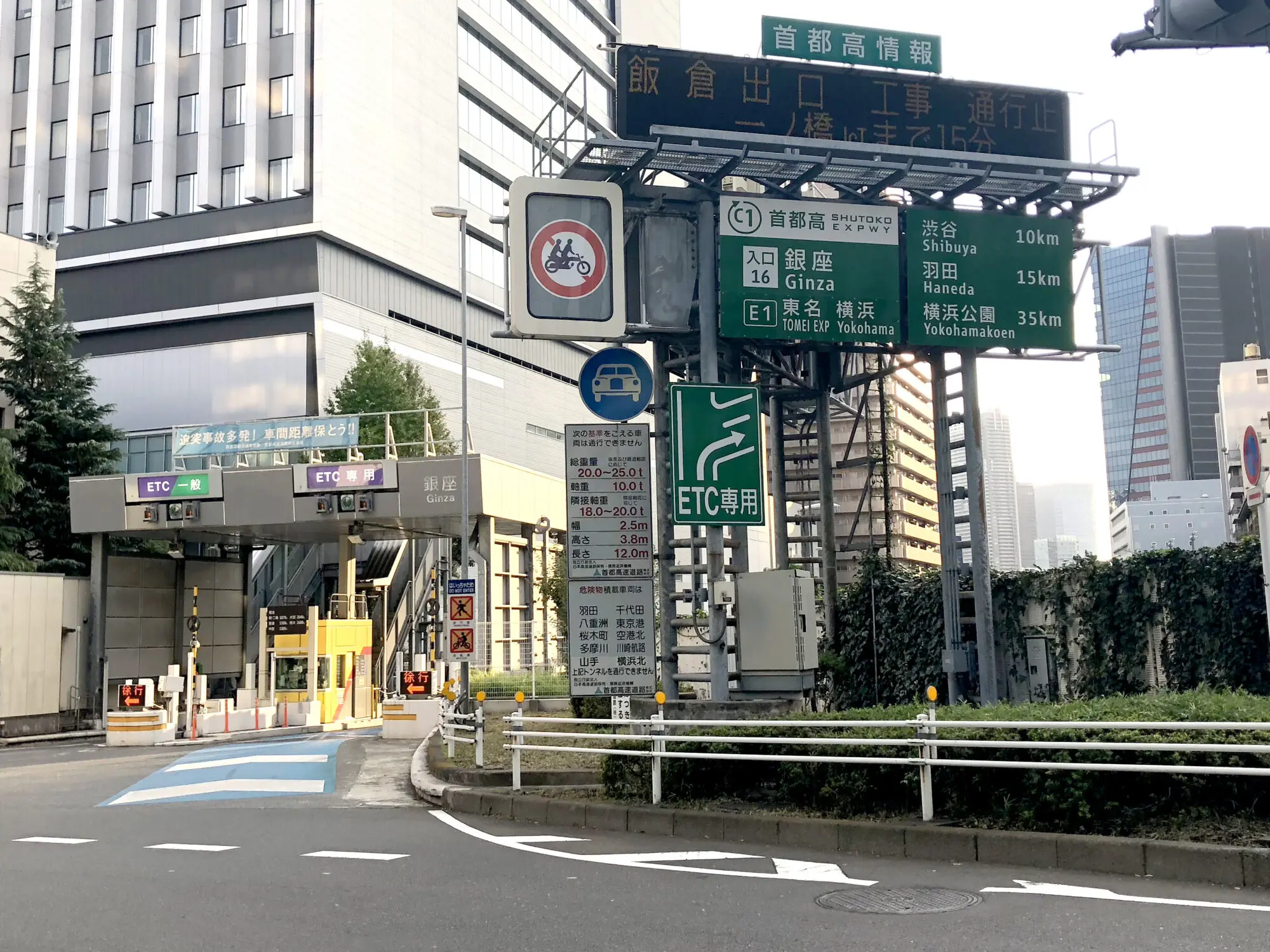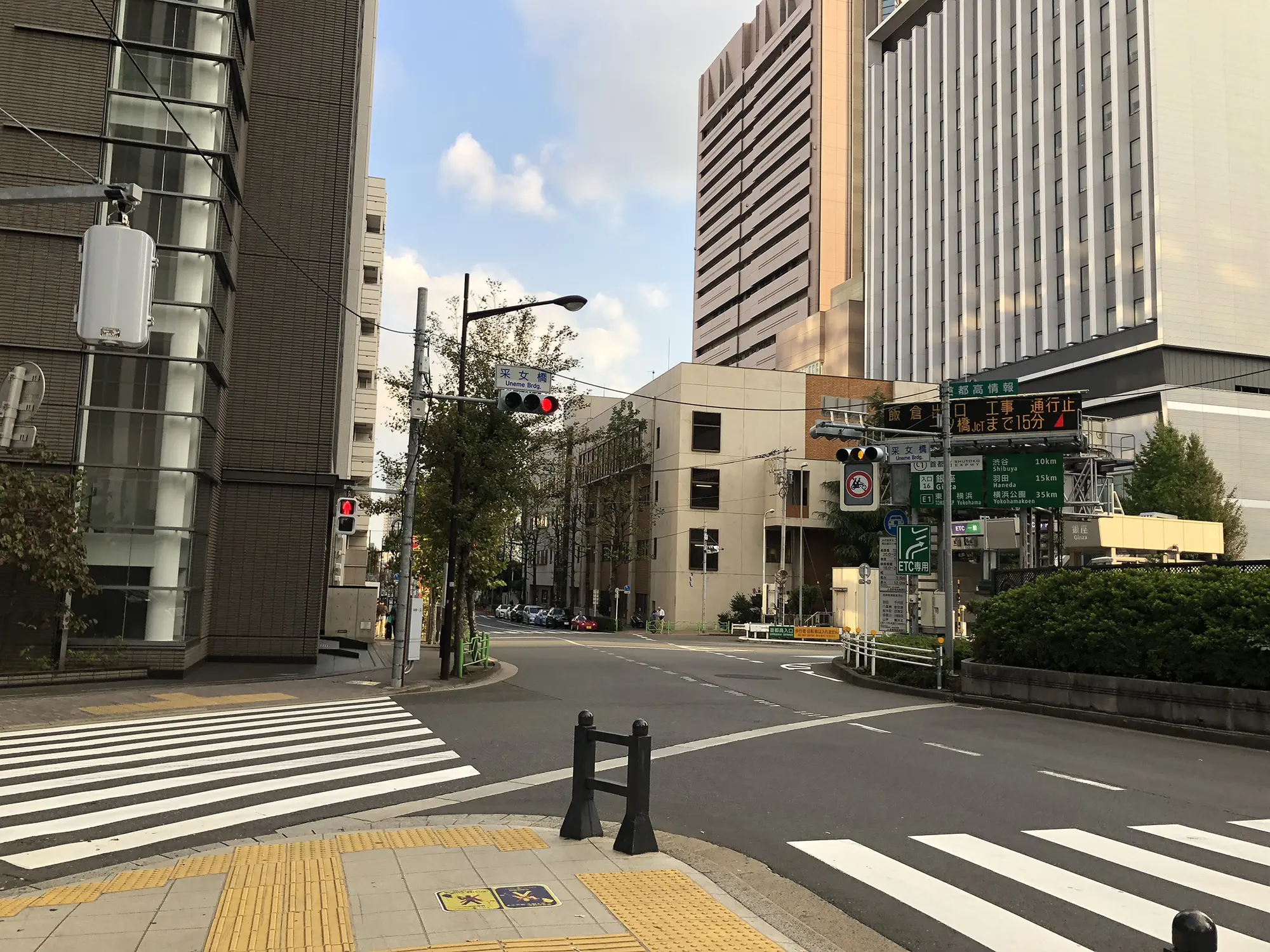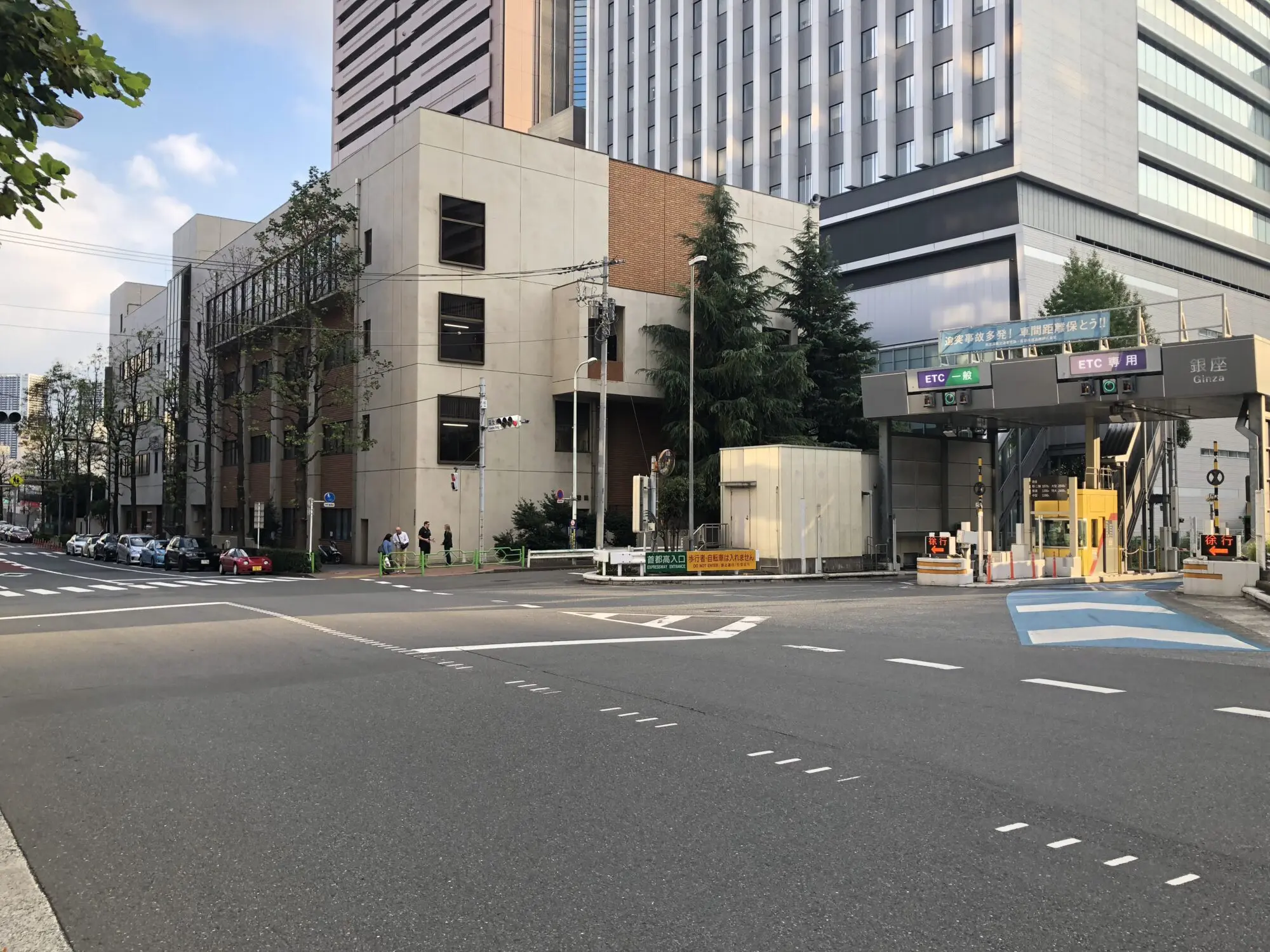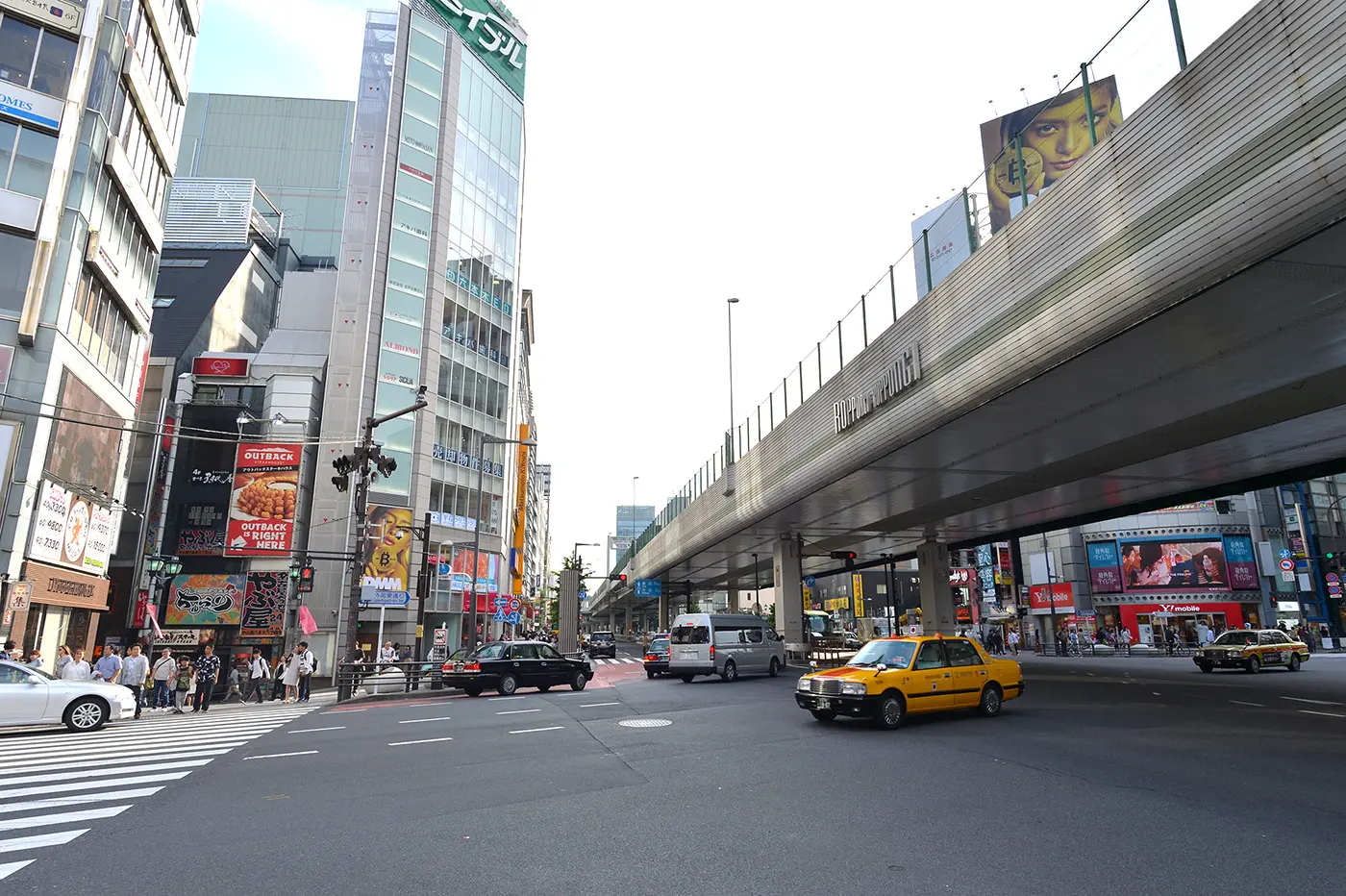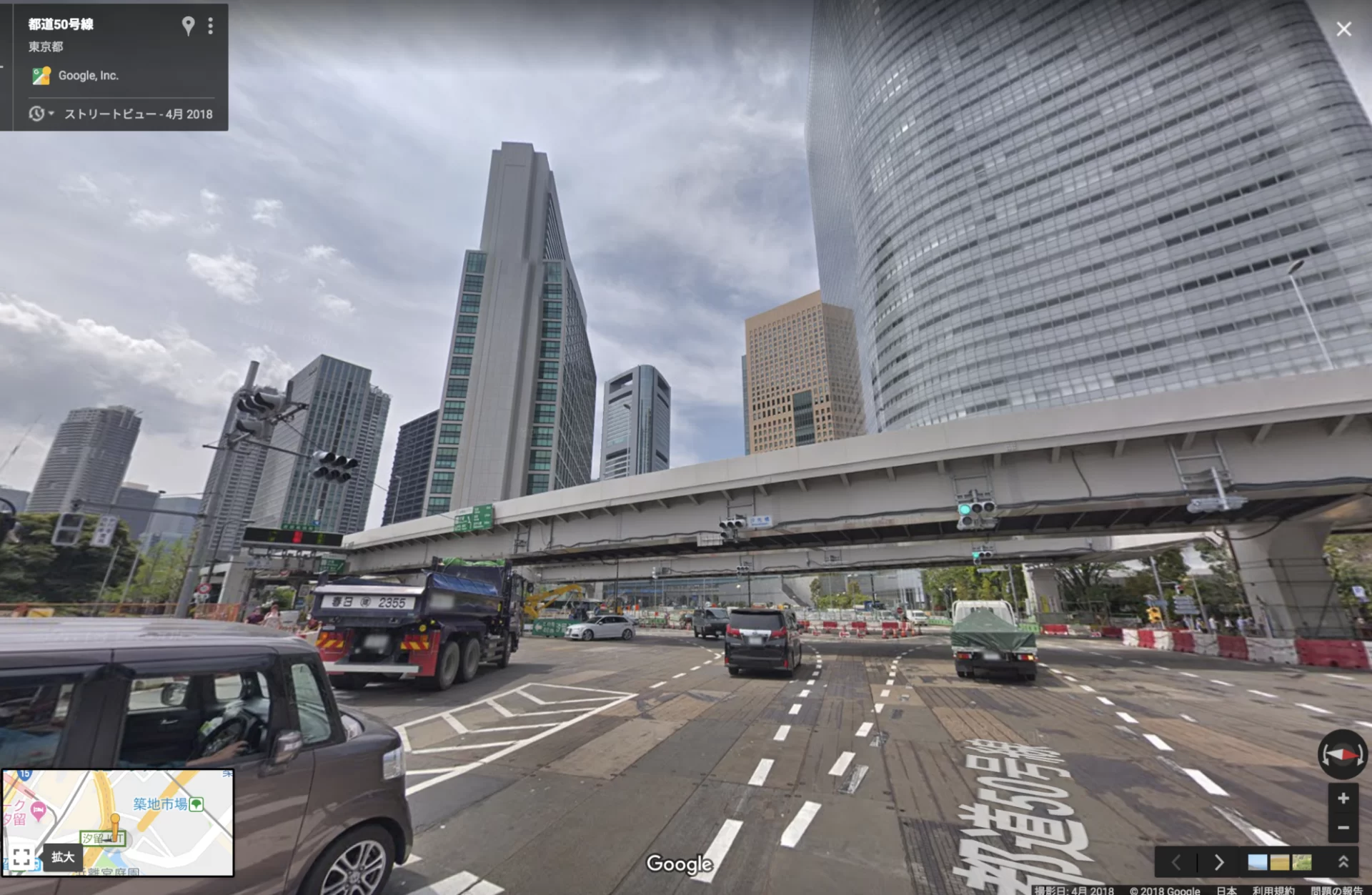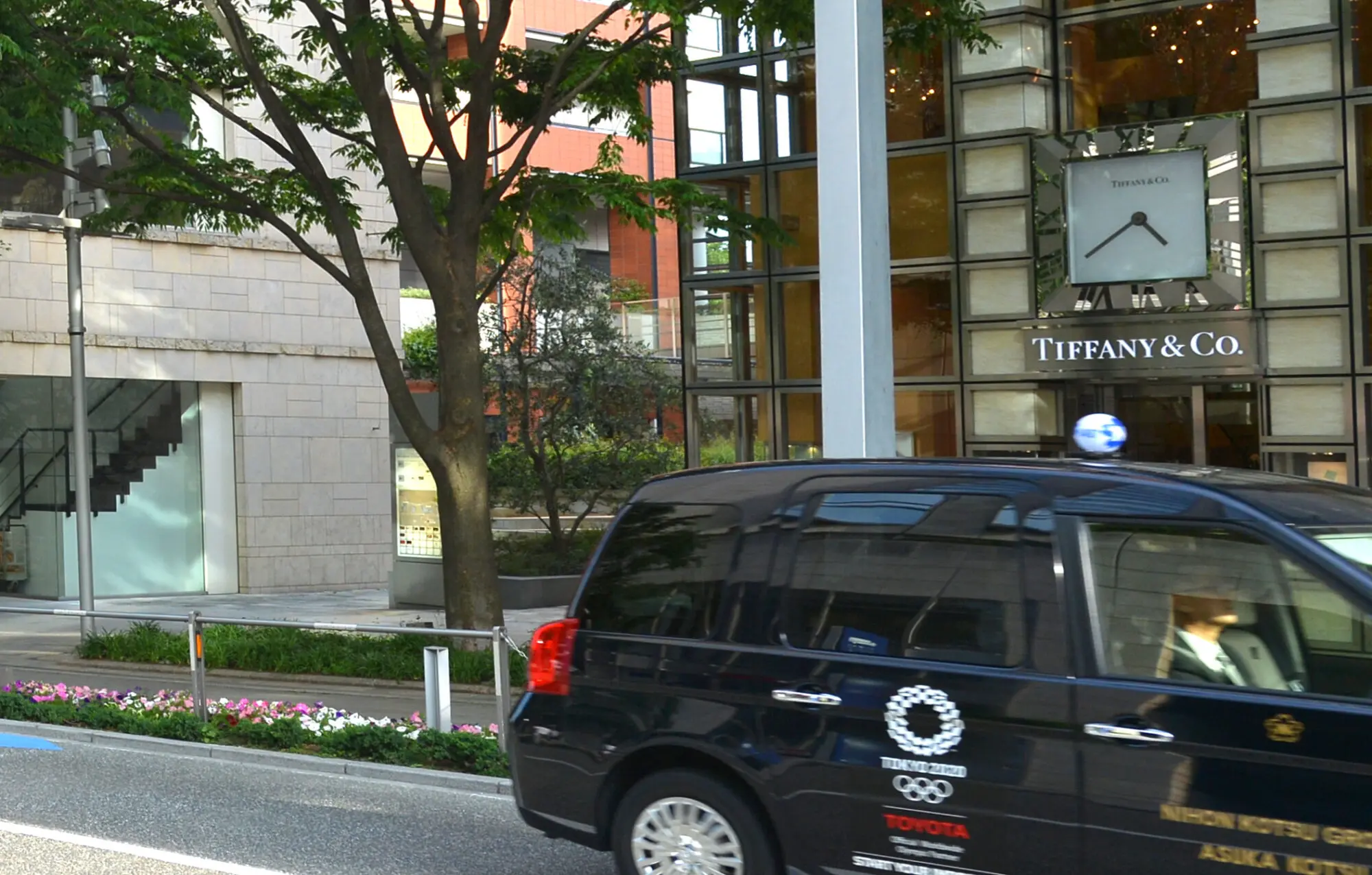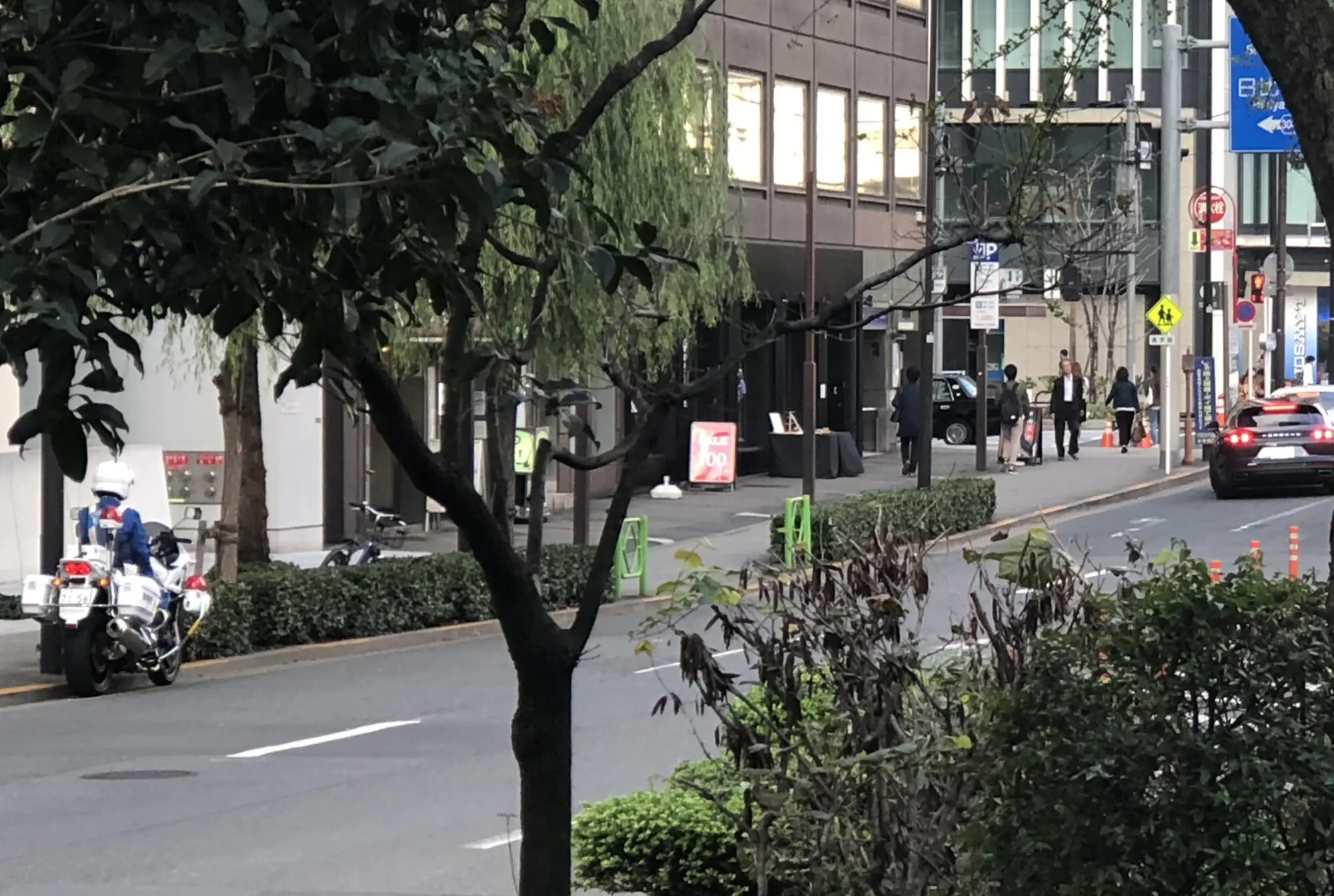It’s been almost a year since I moved to central Tokyo, and I’ve only taken the train a few times in my car-centric life. The traffic rules in Tokyo are still difficult! Here are some warnings and explanations for those who try to drive in Tokyo from rural areas.
Getting on and off the Metropolitan Expressway is difficult.
The entrances and exits (IC) around Tokyo Station, such as Kanda and Ginza, are very narrow and intricate. Even if you are guided by the navigation system, it is difficult to understand and you may end up going in a strange direction. For example, the photo shows the Ginza Interchange, but there are cars going straight in from the left, and cars turning right from the right. The blue line for ETC is also very short.
The blue line for ETC is also short, making it difficult to know which line to enter.
As you can see, there are many difficult places to get in.
On the other hand, it is also difficult to get off the highway, with cars merging from right to left on the main highway.
If you are on the Tomei Expressway, you only merge from the left lane, but on the Metropolitan Expressway, you merge from both sides, and sometimes the exit is on the right.
At the Shibuya exit, you get off and go down Roppongi Street, but if you don’t move to the left lane right away, you will be forced into the right turn lane. As you can see, there are so many places to get in and out that it is difficult to get started.
No right turn, no U-turn
If you make a wrong right turn in front of Shibuya station, you will end up in Ikejiri-Ohashi, 1 km away, without being able to turn right for a long time. If you’re taking a friend to the station in the evening, just one wrong turn can delay your arrival time by 15 to 20 minutes…. Like the Ginza area I mentioned earlier, there are many places where you cannot make a U-turn.
Roppongi Dori also has many places where you can’t turn right, and Meguro Dori in Meguro is really bad. If you are in a hurry to turn left, you will be faced with incredibly narrow streets, so I don’t want to drive on Meguro-dori.
Lots of street parking.
Tokyo is an area that is very tolerant of street parking. Of course, there are green men walking around and sticking parking tickets, but if there is someone inside, there is no blame.
Meiji-dori Avenue from Ebisu to Shinagawa fills up the entire left lane, and even during the evening traffic jams, no one bothers to park in the left lane. Even during the evening traffic, no one bothers to park in the left lane. When cabs get in and out of the street, both lanes can be stopped perfectly.
Among them, chauffeur-driven cars are the most ill-mannered, and since they have to wait for their masters right in front of their stores or offices, they don’t mind parking in the one lane facing each other, which is very obtrusive. It is often a huge traffic jam caused by just one car.
You never know where you are driving.
There are places like the Shiosaki Bridge in Shiodome that are so confusing that you may wonder if you are driving in the right place! I have been driving for more than 10 years. I have been driving for more than 10 years and have traveled more than 200,000 kilometers in total, but even so, it is so confusing that I almost drive the wrong way.
In addition to this, there are many roads where the right two lanes of the three lanes go straight (underpass) and the left two lanes go straight (aboveground) and then diverge, etc. Even if you drive at 30 km/h with a navigation system, you will make mistakes.
Another trap is when you want to turn right, but you are in the right lane and you end up on an overpass, and the correct answer is to stay in the left lane! This is a trap.
It’s just a matter of getting used to it…
A cab stopped suddenly at an intersection and nearly caused a rear-end collision!
The rule for cabs in Tokyo is to stop everywhere!
If you raise your hand to a cab running at nearly 60 kilometers per hour, it will stop suddenly. If you raise your hand to a taxi running at nearly 60 kilometers per hour, it will stop suddenly, and even back up when it has passed its stopping point. This is convenient for pedestrians, or rather cab users, but it is unbearable for the cars following behind.
If you leave some distance between you and the cab, the cab in the right lane will cut in and stop suddenly! It’s an impossible game.
Don’t go into narrow spaces
It’s not as bad as Kyoto, but don’t go into narrow streets!
Even if the navigation system shows you a narrow road, you may have to change to a wider road “just before” the narrow road, or you may have to back up, or you may end up in a hell where you can’t go forward or backward because of the following mini-cars.
If you’re driving a compact car, you’ll be fine, but if you’re driving a large sedan, you’ll be asking yourself, “Will it work? But if you are driving a large sedan, it is important to have the spirit of “No! It is important to have a “no!
Also, on holidays in places like Shibuya and Shinjuku, there are times when what the road traffic laws and navigation systems say you can take is actually a road you can’t take. There are too many people, and people and bicycles come at you from all directions. It takes a long time to get out of the way and your mind is exhausted.
Bicycles jump out at you
Bicycles are free to use all three lanes of the road.
In other words, even though you are driving in the rightmost lane, you may almost collide with a bicycle. This is also unique to Tokyo….
These days, you have to be especially careful of boys and foreigners riding rental bicycles from Uber Eats, who jump out at you regardless of your manners.
Small school children have surprisingly good manners and do not jump into lanes or ignore red lights. It is the adult bicycles that scare me.
Instead of speeding, catch them for not stopping, not turning, and not turning right.
In the countryside, they mainly catch people speeding, parking on the street, and not stopping for a while, but in Tokyo, they tend to catch people especially for not turning and not stopping for a while. Unlike in the countryside, it is difficult to speed in crowded areas, and perhaps because it is easy to prove the violation, those are the two most common.
In the photo, I caught a car that did not pause at an exit of the highway. Similarly, bicycle policemen are staking out places where turning is prohibited, or catching people who turn before exiting a right turn signal.
If drivers appeal to the public to pause excessively and depart, they should not be caught in the first place. Also, when turning right on a large four-lane road, focus on whether turning is prohibited. If you are not sure if it is a no-turn zone, you should not get caught.
If you don’t know if turning is prohibited, don’t turn (U-turn).
So, driving in Tokyo is still difficult!
Please be careful when driving, especially in narrow alleys and on the Metropolitan Expressway.
